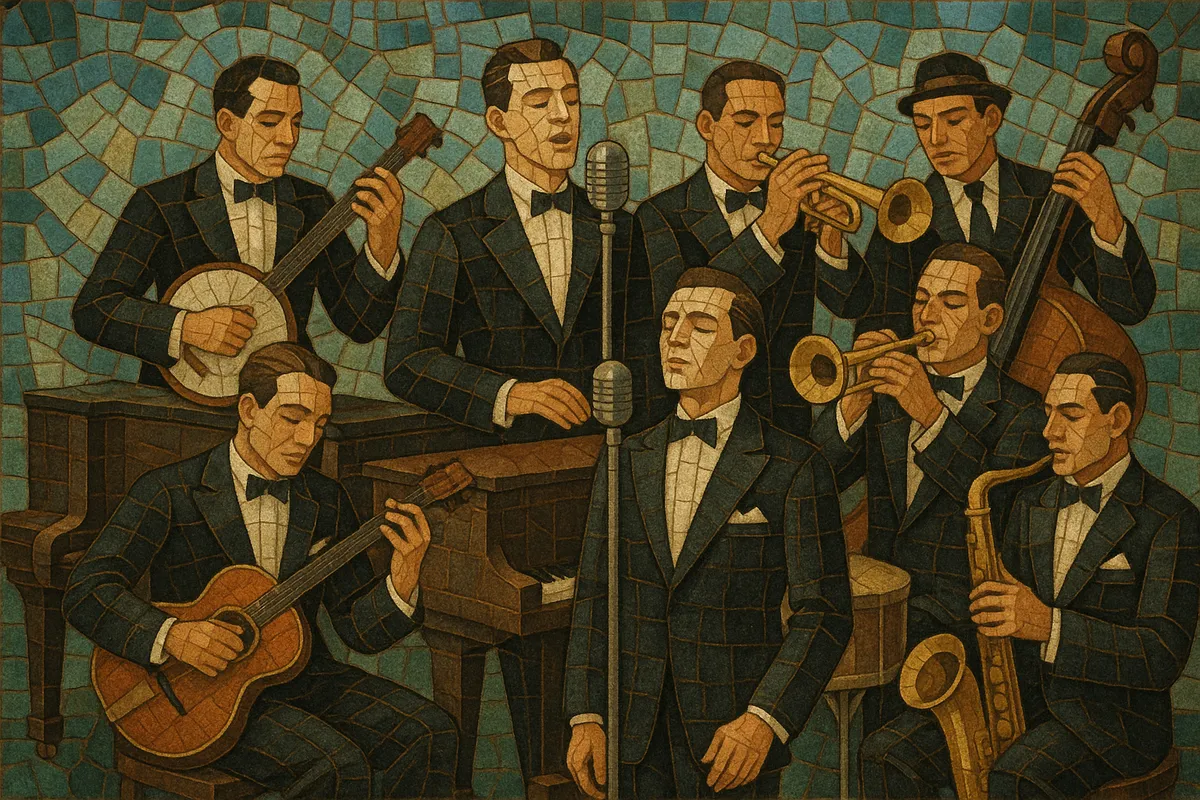
British dance band refers to the polished, hotel-ballroom and radio-friendly dance orchestras active primarily in Britain during the 1920s and 1930s.
Characterized by smooth, tightly arranged versions of foxtrots, waltzes, quicksteps, and tangos, the style blended American jazz-dance band idioms with British light-music and music-hall sensibilities. Improvisation was usually restrained in favor of clear melody, elegant voicings, and reliable “strict-tempo” rhythms designed for social dancing.
Typical ensembles featured saxophones (often clarinet doubles), trumpets, trombone, violins, piano, banjo or guitar, string bass or tuba, and drums—sometimes with a crooner or vocal trio. The sound was urbane and genteel, popularized via prestigious hotel residencies (e.g., the Savoy) and BBC broadcasts, and it helped standardize many songs that later became part of the Great British and American songbooks.
After World War I, British hotel and café society embraced modern social dances imported from the United States and continental Europe. British bandleaders adapted the American dance band template—already informed by ragtime and early jazz—into a polished, “strict-tempo” approach suited to ballroom floors and refined venues. Early recordings and residencies at London hotels (notably the Savoy) and growing BBC radio exposure created a national audience.
During the 1930s the style matured and flourished. Orchestras led by Ambrose, Jack Hylton, Henry Hall, Roy Fox, Carroll Gibbons, Ray Noble, Lew Stone, and others became household names. Repertoires centered on foxtrots, waltzes, quicksteps, and tangos, with arrangements emphasizing clear melody lines, sectional call-and-response, and lightly syncopated rhythms. Compared with many American bands, British dance bands typically featured less improvisation and a sweeter, string-enhanced sonority.
As swing’s harder-driving rhythmic feel gained popularity, some British bands modernized, but the gentler British dance band aesthetic began to wane. World War II disrupted personnel and venues, and postwar musical tastes shifted toward smaller jazz combos, bebop, and later, pop and rock. Many leaders transitioned into radio, variety entertainment, or light music contexts.
Though its mainstream dominance faded, British dance band music left a durable legacy: a template for strict-tempo ballroom performance, a polished orchestral style that fed into light music and traditional/pop crooning, and a repertoire embraced by nostalgia movements, lounge revivals, and swing revivalists. Reissues and specialist radio programs continue to preserve the era’s elegant sound.

